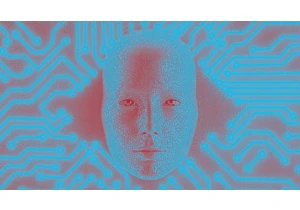There’s a long history of robots taking jobs that are difficult enough for humans to resent, resist, or outright fear. But a new crop of bots is tackling tasks that even machines might calculate to be out of their theoretical comfort zones.
Gecko Robotics has been deploying its devices to inspect intercontinental ballistic missile silos, fuel storage tanks, and the structural components of warships. Nearthlab provides a software platform that enables drones to perform up-close checkups on wind turbines and other critical infrastructures. Stratom is developing robots to service and refuel aircraft on flight lines that may be near the frontlines in war zones. And Doodle Labs’s radio gear helps drones flown by Ukraine’s armed forces stay in touch with human operators and has kept firefighters in contact with each other in rural California during wildfire season—making it one of the only firms in this category that could reasonably fret over seeing its hardware take a bullet or end up as ashes.
While much of the attention in robotics has been focused on humanoid robots that can interact with human workers, the bots that are heading toward danger look very different. Hardware with non-humanoid body parts may not catch as many glances from passersby, but those devices can go to work where people won’t fit or wouldn’t want to try, even after donning protective gear. In other words, the near-term future of robotics is less C-3PO from Star Wars and more WALL-E, the trash-collecting bot from Pixar’s sci-fi animated movie.
“If you look at the history of robots, they traditionally started out as the fixed robots you see on the assembly line,” says Tim Shea, senior analyst at ARC Advisory Group. “The incorporation of mobility has opened up the application envelope.” The addition of wheels, tank treads, and (yes) even legs in recent years has unbolted robots from their stands and taken them outside of factories. Bots that use wings and rotors to move, Shea points out, also require special permission slips from the Federal Aviation Administration, which has eluded many drone vendors until the past few years. But demand for commercial hardware and services from hazardous-duty robotics is starting to take off, following years of pathfinding work that included developing software and gathering the necessary data to make them usable in tight spots. “There’s been a real ramp-up, probably in the past couple of years,” Shea says.
The ultimate payoff in waiting for robotics companies, like other firms that need to ingest and process large amounts of customer information before they can do their jobs, is taking all those data inputs and making effective and responsible use of the insights to be had from them. As Shea puts it: “The robot has really become a mobile data platform.”
Explore the full 2024 list of Fast Company’s Most Innovative Companies, 606 organizations that are reshaping industries and culture. We’ve selected the firms making the biggest impact across 58 categories, including advertising, artificial intelligence, design, sustainability, and more.
Ak chcete pridať komentár, prihláste sa
Ostatné príspevky v tejto skupine

Cryptocurrency exchange Bybit said last week hackers had stolen digital tokens worth around $1.5 billion, in what researchers called the biggest crypto heist of all time.
Bybit CEO Ben Z


Anthropic released on Monday its Claude 3.7 Sonnet model, which it says returns results faster and can show the user the “chain of thought” it follows to reach an answer. This latest model also po

This morning, Apple announced its largest spend commitment to da


In 2024, Amazon introduced its AI-powered HR ass

Lore isn’t just for games like The Elder Scrolls or films like The Lord of the Rings—online, it has evolved into something entirely new.
The Old English word made the s
